Embracing the AI Revolution in Product Photography: Benefits and Limitations
Product photography is a crucial aspect of e-commerce and digital marketing, as high-quality visuals play a pivotal role in capturing consumers' attention and influencing their purchasing decisions. In the past, capturing stunning product images often required professional photographers, expensive equipment, and elaborate setups. However, with the advent of artificial intelligence (AI), the landscape of product photography is changing rapidly.
AI-powered software tools are now available that allow businesses to upload product images and generate suitable backgrounds with specified themes, creating impressive visuals without the need for photographers or elaborate setups. This technology has the potential to revolutionize product photography, making it more accessible, cost-effective, and efficient for businesses of all sizes. Let’s explore how the benefits and limitations surrounding the use of AI in the product photography industry.
Benefits of AI-Powered Product Photography
AI-powered product photography offers numerous advantages for businesses in the e-commerce and digital marketing realm, mainly by offering time and cost-saving alternatives to traditional photography, and enhancing creative possibilities for businesses.
Efficient and Streamlined Processes
One of the most significant benefits of using AI-powered product photography lies in its ability to automate and simplify the entire process, resulting in substantial time, and cost savings. By leveraging AI, businesses can bypass the requirement of hiring professional photographers and having to engage in intricate set-up arrangements. By using AI tools like Pebblely, which can change the background of your photo with AI that act on prompts provided, (Pebblely AI Product Photography | Create Beautiful Product Photos in Seconds, 2022), significant time and cost savings will be enjoyed.
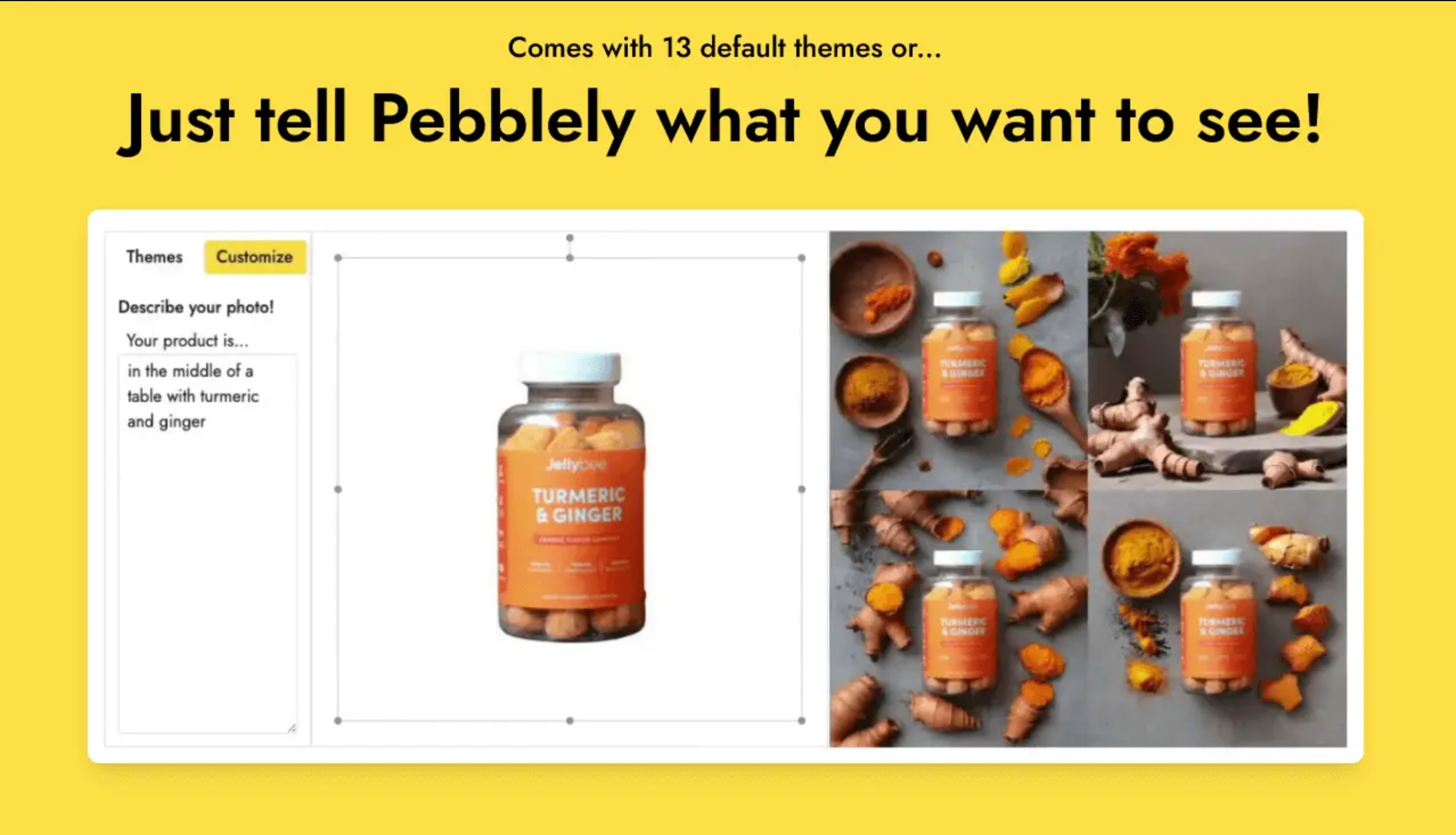
Greater creative control and customization
AI-powered product photography tools can also offer increased flexibility and user customization. Many AI editing tools offer a wide selection of background themes to fit a myriad of different brand aesthetics. For example, Pebblely can generate unique backgrounds for the user's uploaded photo based on the prompts it receives.
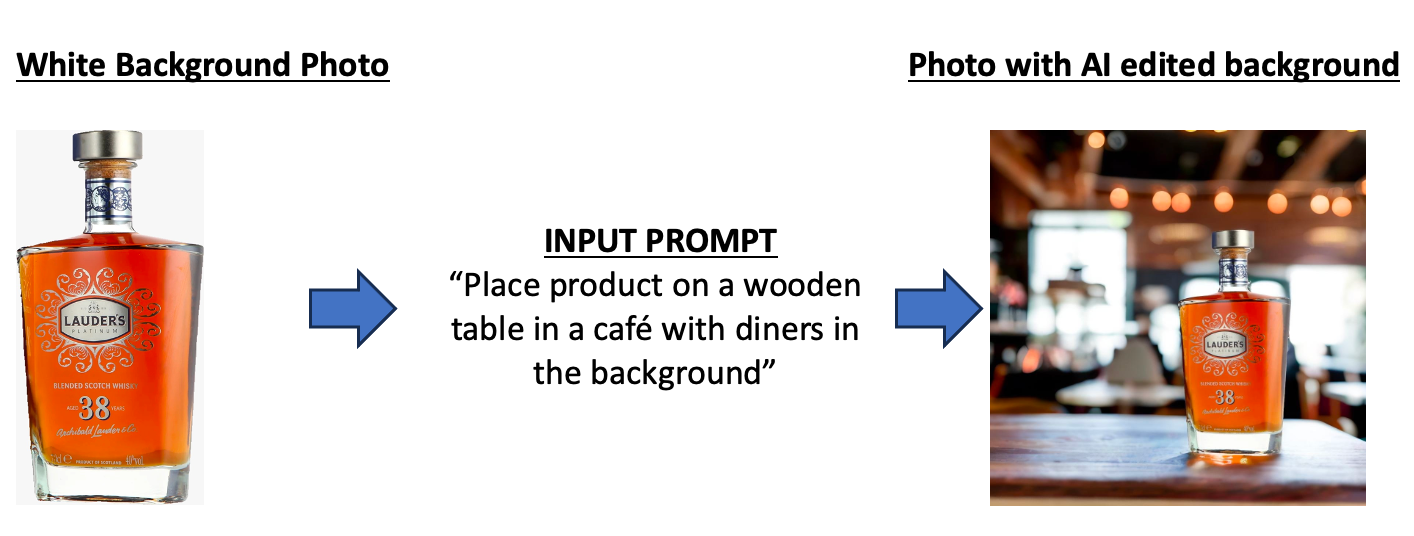
Although AI has brought about a multitude of benefits to the product photography industry, it is not without its flaws. Let’s discuss a few limitations that exist to the use of AI in product photography.
Limitations of AI-powered product photography
Unrealistic backgrounds and photos
One of the main and most apparent limitations of AI in this field is the potential of generating very artificial and unrealistic background product photos. The AI algorithms rely on pre-set patterns and data to generate the requested background themes based on the provided prompts, but they may not generate a realistic looking photo, and may not be able to accurately capture the nuances of the desired specific look. The picture below shows how the AI software can distort the image, making it look unrealistic.

Lack of artistic flair
Another limitation will be the lack of artistic flair. Ultimately, photography is an art form that requires the photographer to make subjective choices that showcase their flair and photography style. Factors such as lighting, composition and angles are what make an image both visually appealing and emotionally engaging. AI tools do not possess the ability to process emotions or make decisions. Hence, they may not be able to fully replicate the creative input and unique perspectives that traditional photographers and editors can bring to the table.
Inability to replicate complex details
Lastly, AI-powered product photography tools are also not suitable for all industries and product types. Complex products with more intricate textures, reflective surfaces, or dynamic details will require more nuanced photography techniques as opposed to other products that are easier to shoot. Some industries that will require more nuanced photography include fashion, jewellery and automotive industries. These industries normally demand higher-quality, and more detailed visuals in their product photos, which AI may not be able to replicate.
Here at SnappyFly, we have also experimented with various AI-powered tools for product photography. And we found that one of the problems with these tools was very apparent when we input our product photo of a dress into the AI software.
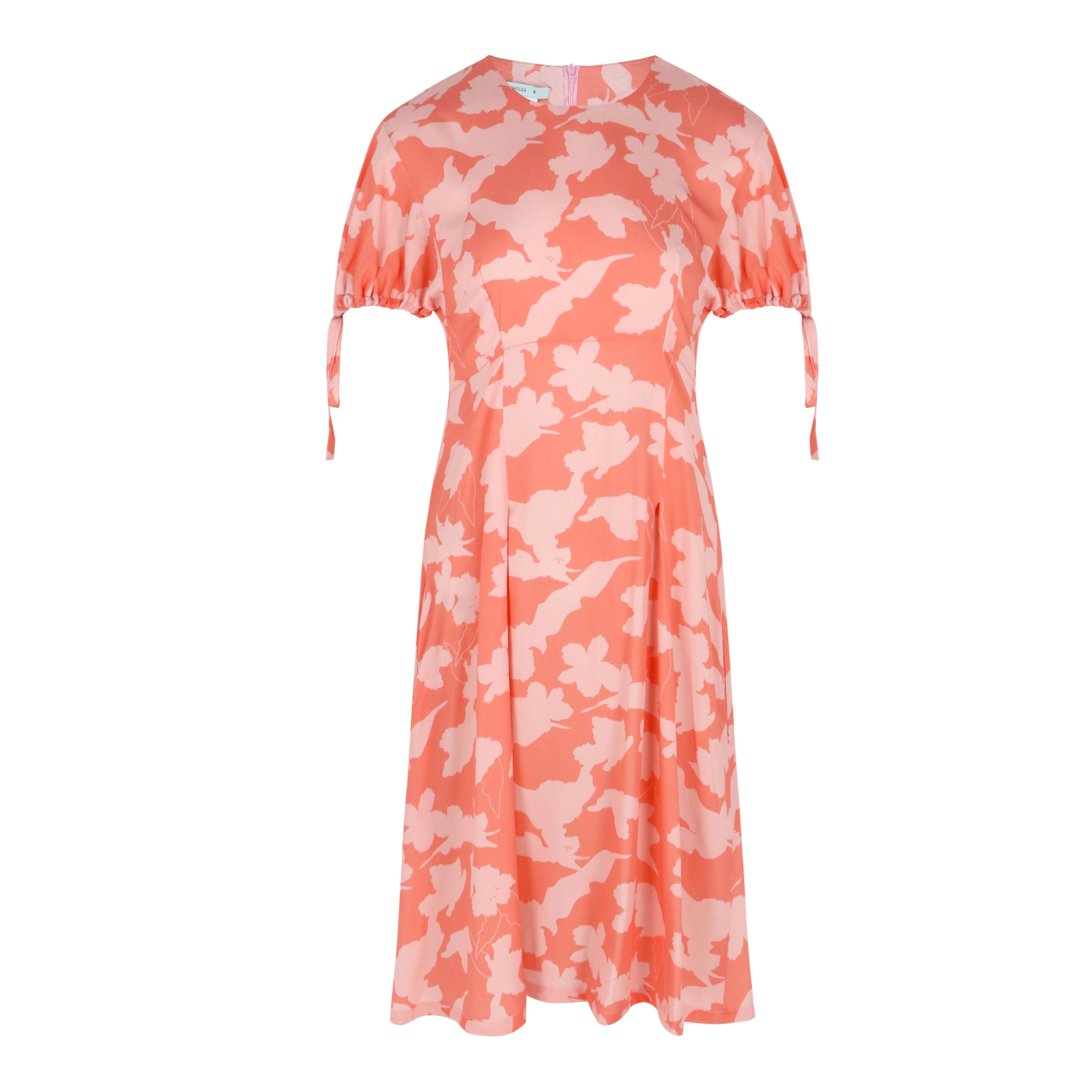
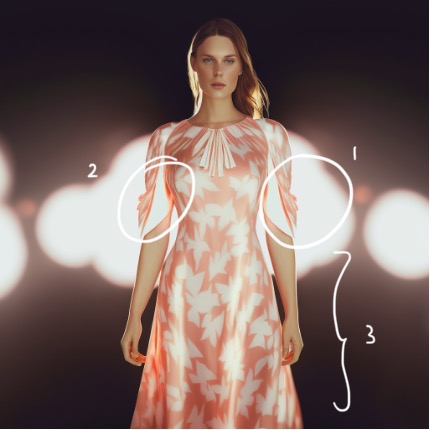
Using the Midjourney generative AI tool, we tried to generate a composite photo of a “Caucasian woman wearing a dress”, using our dress product photo and the stated prompt. The identified issues in the picture are:
1. The details on the sleeves of the dress are missing.
2. The model’s arms are cut off at the sleeve.
3. The cutting of the dress has been altered.
Hence, we can conclude that companies and industries with more intricate products that require more meticulous and intricate photos will still need to go the traditional route with human photographers, editors and set-ups.
However, this does not mean that AI and traditional photography have to be used exclusively. It is possible to incorporate both techniques together, and leverage on the benefits of both traditional photography and AI at the same time.
Striking a balance between AI and traditional photography
The collaboration between AI and human photographers offers a powerful synergy that combines AI automation's efficiency with the creative vision of humans. Human photographers contribute artistic nuances, experiment with lighting and composition, and capture product uniqueness, resulting in authentic and visually compelling images. AI-powered tools enhance and optimize these visuals through background removal, color correction, and retouching for a polished and professional look. Moreover, AI can serve as a tool for ideation and inspiration, generating diverse product image options to aid creative brainstorming and concept development, enabling businesses to create unique and standout visuals in the competitive online marketplace.
1. Pebblely
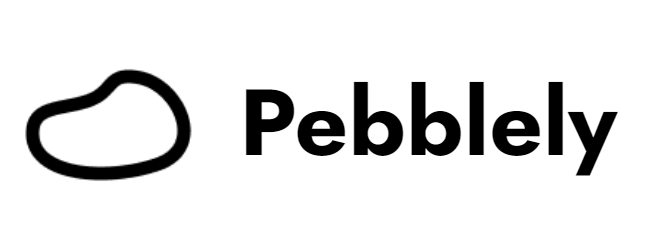
|
To generate beautiful product photos with different backgrounds and props
https://pebblely.com/ |
2. Midjourney
 |
Can generate images from natural language descriptions
https://www.midjourney.com/home/ |
| 3. Pixelcut
|
To create product photos in various different styles to choose from, white and transparent backgrounds
https://www.pixelcut.ai/tools/ai-product-photos/ |
4. Booth.ai

|
To generate high quality lifestyle photos based on prompts and sample product photos
https://www.booth.ai/ |
5. Vue.ai

|
To create high-quality on-model product photos without elaborate photoshoots
https://vue.ai/solutions/ai-product-imagery/ |
SnappyFly and AI
At SnappyFly, we utilise state-of-the-art product imaging machines and software to create high-quality, professional product photos that are efficient and cost-effective, surpassing traditional product photography methods. The software incorporates simple AI algorithms to perform tasks such as automated background removal, saving time and reducing costs. While we leverage AI to streamline our product photography process, we still prioritise the human touch, ensuring that our photos retain a unique and personal touch. As AI technology advances, SnappyFly will continue to integrate AI into our workflow to further enhance our efficiency and improve the quality of our product photos. Click here to learn more about our product photography service.
Here is a TLDR just in case you couldn’t sit through the whole article!